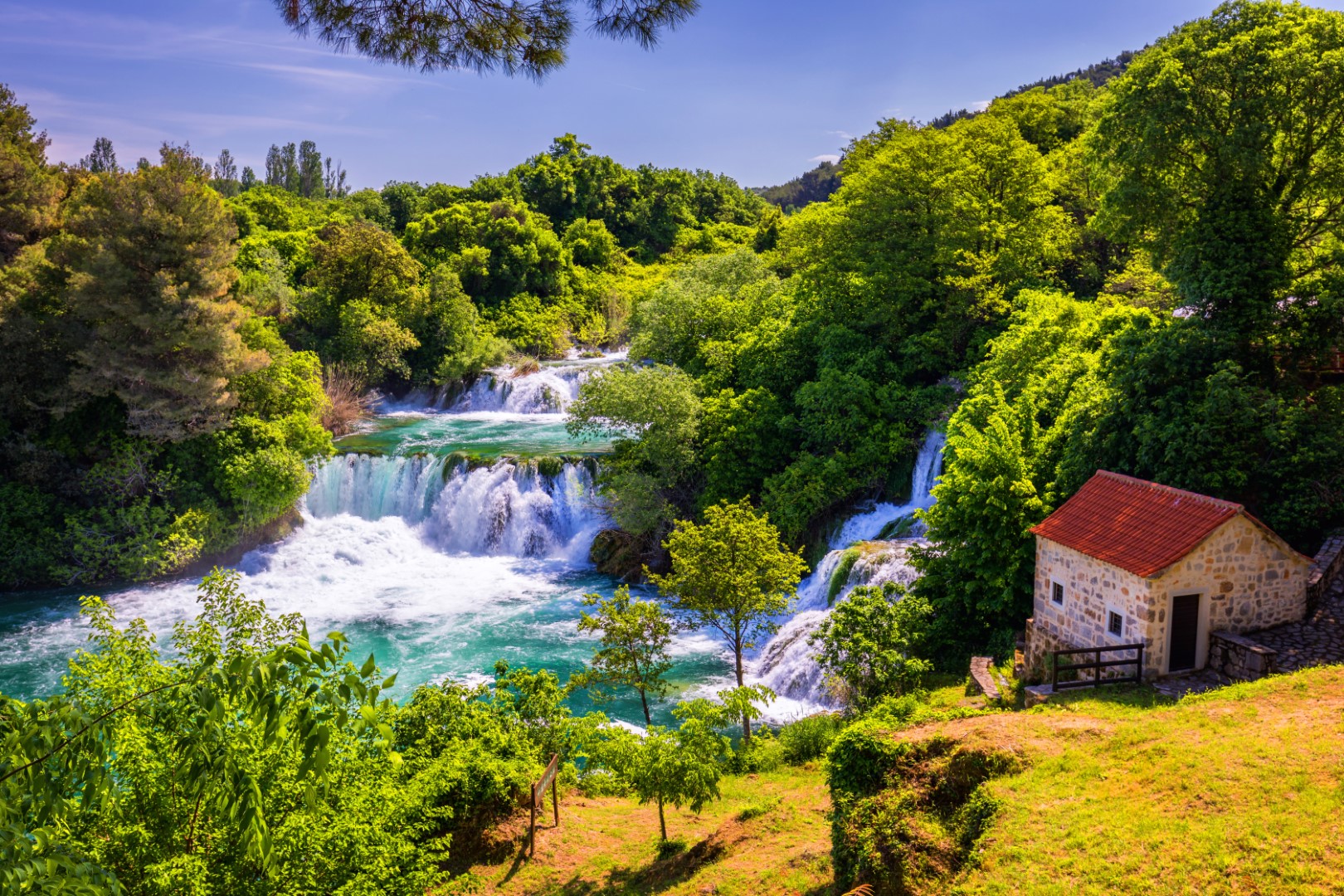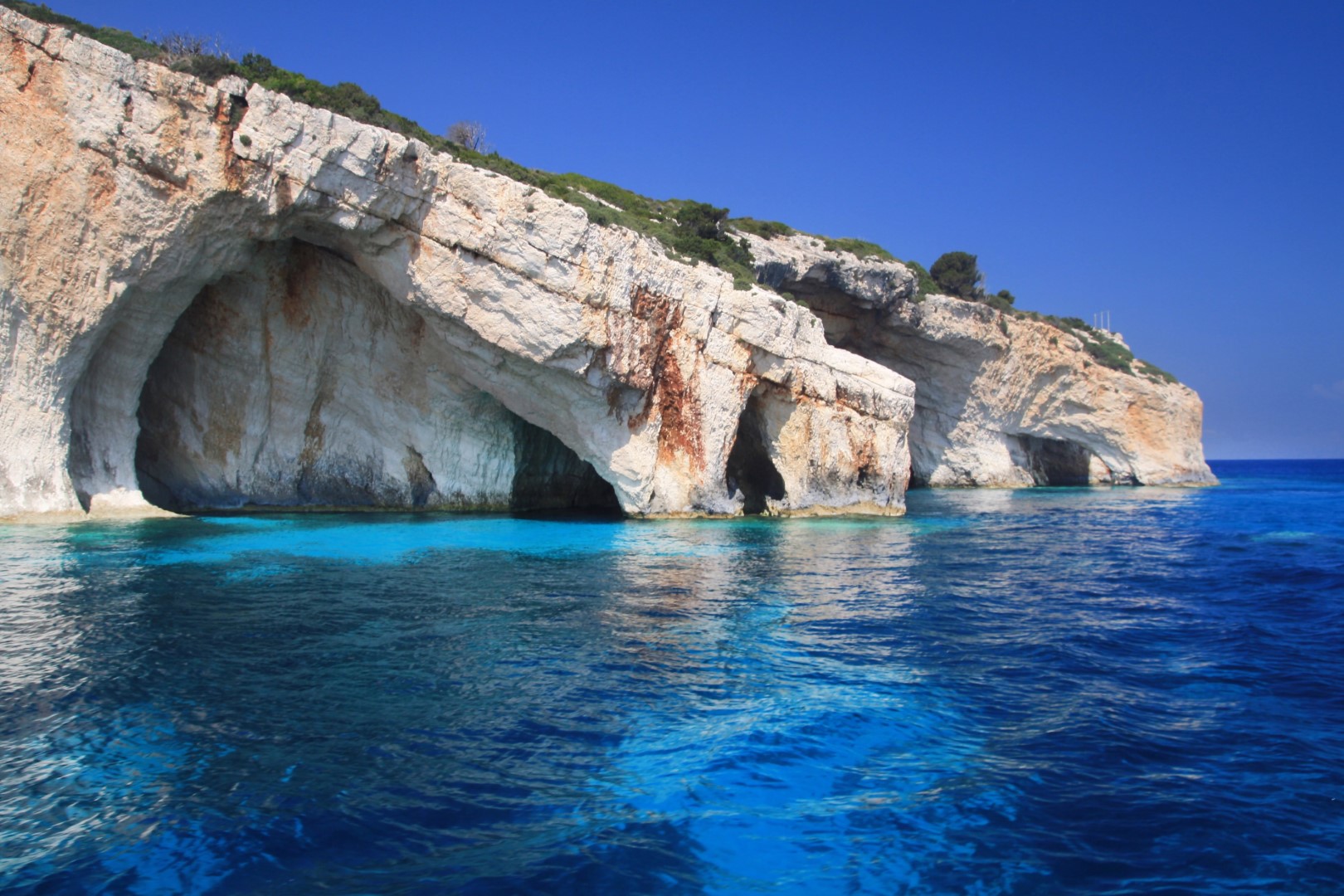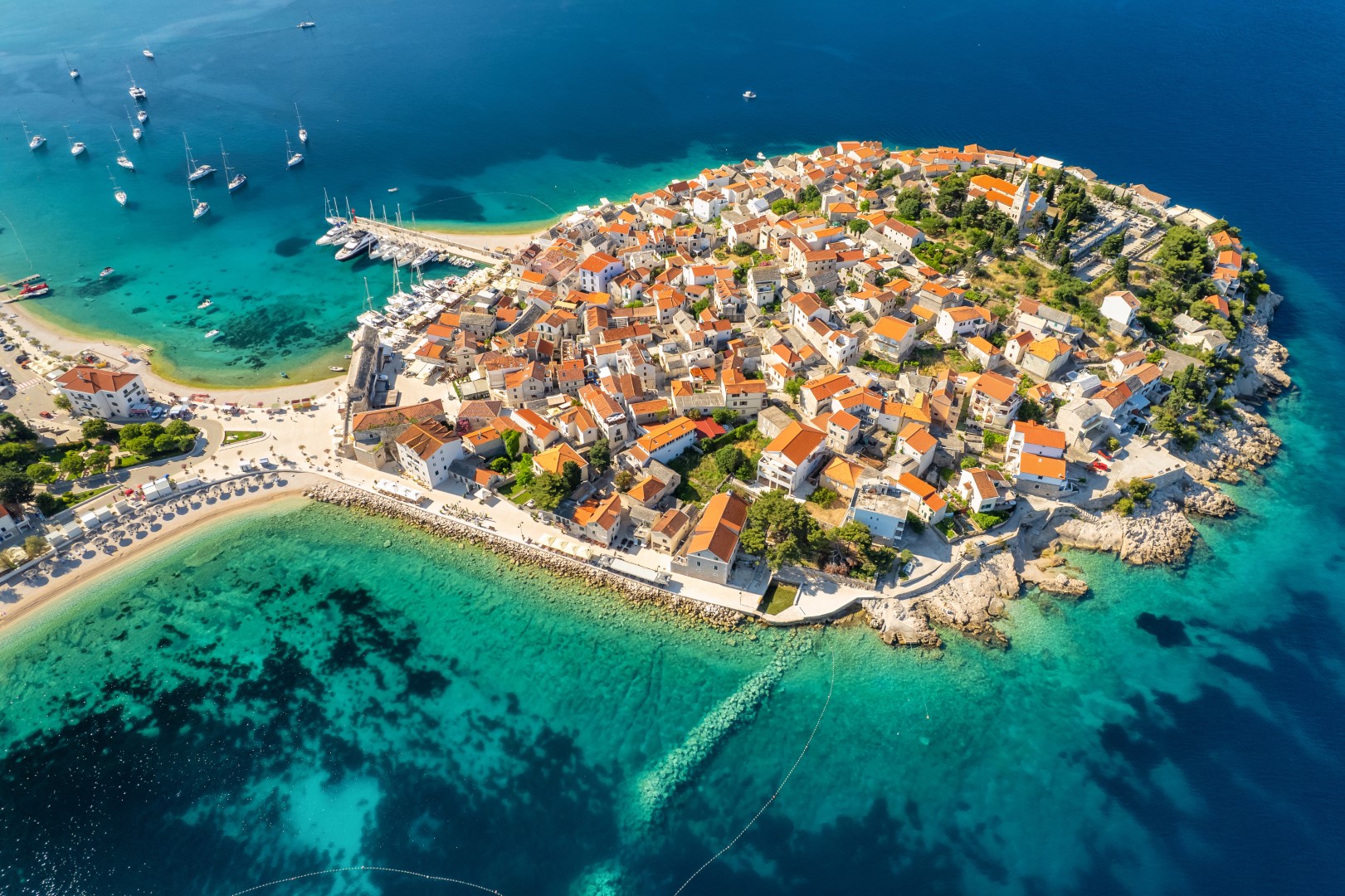In the motherly embrace of four mighty fortresses, Šibenik emerges from the unbelievably beautiful bay. One of the oldest Croatian cities is an imaginative play of UNESCO heritage, the priceless city core and Dalmatian life by the sea. Šibenik has always been attractive to conquerors, so the guardians of Šibenik - the Šibenik Fortress of St. Mihovil, Barone, Sv. Ivan and St. Nikola. All of them offer a magnificent view of one of the largest and best-preserved historical city centers. Once irreplaceable in the defense of the city against enemies, today it is an essential point on a tour of Šibenik sights. The specialty of Šibenik fortresses is precisely that they offer visitors the story of their cultural and historical heritage wrapped in the garb of modern technology. Šibenik is the only city in Croatia that has 2 monuments under UNESCO protection. With the beautiful cathedral of St. Jakov, the symbol of Šibenik, which is also one of the most beautiful architectural achievements in Croatia, there is also the fortress of St. Nikola maritime beauty of unique architecture built in the 16th century, at the entrance to the Channel of St. Ante in Šibenik, on the islet of Ljuljevac, on the site of the former Benedictine monastery of St. Nicholas, after which it was named, in order to defend the city from enemies.

With its seven waterfalls, the Krka River is an exceptional natural and karst phenomenon that delights visitors again and again. The central landmark is Skradinski buk - one of the most beautiful and largest Croatian waterfalls. Krka is also an unmissable destination for lovers of active holidays - it offers many attractive hiking and cycling routes. There are rich ethnographic collections on Skradinski buk and Roški slap, and a completely preserved pre-industrial water plant. The Jaruga hydroelectric power plant, the second oldest hydroelectric power plant in the world and the first in Europe, is open to visitors. It was built under the Skradinski buk waterfall on the Krka river, mostly thanks to Nikola Tesla. It was put into operation two days after the world's first hydroelectric power plant at Niagara Falls was put into operation according to Nikola Tesla's patents. An 11.5 km long transmission line on wooden poles was also built to nearby Šibenik, and Šibenik was the first city in the world to receive alternating current for its facilities. It is interesting that the American city of Buffalo (NY), which is connected to the hydroelectric power plant built by Tesla at Niagara Falls, was illuminated with alternating current only on November 15, 1896, more than a year after Šibenik. Apart from the beautiful waterfalls that are the main attraction, Krka offers many other attractions, interesting localities, educational trails ...

The ancient Knin fortress is one of the largest and oldest European fortresses, which with its beauty and mysticism quickly and easily captures the hearts of visitors with a view of the Krka river and the Knin field surrounded by mighty mountains. A walk through the fortress in the company of old walls and bastions is a walk that arouses the imagination and creates an unforgettable experience. The fortress is located at 345 meters above sea level and at a height of 100 meters above the city of Knin, it is 470 meters long and 110 meters wide at its highest point. The defensive walls, which surround it from all sides in a length of almost 2 km, are in some places up to 20 m high. The Knin fortress is one of the largest Croatian fortification monuments and is the second largest military fortification in Europe, extremely elaborate and preserved in all its parts. It is a living cultural monument, with a museum, exhibition spaces and a restaurant, and certainly represents the main brand of cultural tourism on this side of Krka. The Croats started building the Knin fortress in the 9th century. The Knin fortress can be divided into five parts. The oldest part of the Knin fortress or the oldest town is the upper town, or Kaštel Knin. It was created in the 9th century, when the Croatian medieval castrum was formed. There was the seat of the old Croatian state and kings. There are also the remains of a fortification built during the people's dynasty of Croatian rulers, which, for now, can only be praised by Knin. Bridges lead from Kaštel Knin to Kaštel Lab, where there is a metal pole with the Croatian flag and a monument to the first Croatian president Dr. Franjo Tuđman. From Lab, visitors descend to Garišta, Belvedere and Donji grad, and the entrance to the fortress itself is via a movable wooden bridge.
ZIPLINE AT FORTRESS - Discover the ultimate zipline adventure at Knin Fortress, where history meets breathtaking views and adrenaline-pumping excitement. Soar over the Krka River canyon and create unforgettable memories with friends and family.

The island of Murter is the largest and most populated island of the Šibenik archipelago, separated from the mainland by the narrow Murter channel, over which a 12-meter-long movable bridge was built in the town of Tisno. This beautiful island has four settlements, Murter, Betina, Jezera and Tisno, and has been inhabited for almost two millennia. Due to its history, distinctive settlements rich in tradition and culture, indented coast and large archipelago, organization and way of life - above all, attachment to the ship and sailing, which has remained the dominant identity feature of Murter until today, Murter represents an island among islands. From traditional farmers in Tisno to fishermen and sailors in Jezera, to Kornatari from Murter and boat builders from Betina, each of them tells their story through songs, customs, manifestations and gastronomy of one of the most special Croatian islands.

Primošten is a beautiful small town located on the eastern coast of the Adriatic Sea, between Šibenik and Trogir. Known for its extraordinary beauty and charm, it attracts visitors from all over the world with its picturesque landscape, rich history and its authentic Mediterranean charm. One of the most famous features of Primošten is its old town core, next to which stretches the peninsula, surrounded by recognizable stone houses. The old core is one of the most attractive places for tourists because it has all the characteristics of an old Dalmatian town. Narrow stone streets, houses next to each other, the expanse of the sea, are just some of the characteristics that contribute to its attractiveness. At the top of the old town there is a beautiful church of St. George, a stone church surrounded by green pines, which offers a view of the expanse of the sea and one of the most beautiful sunsets on the Croatian coast.
